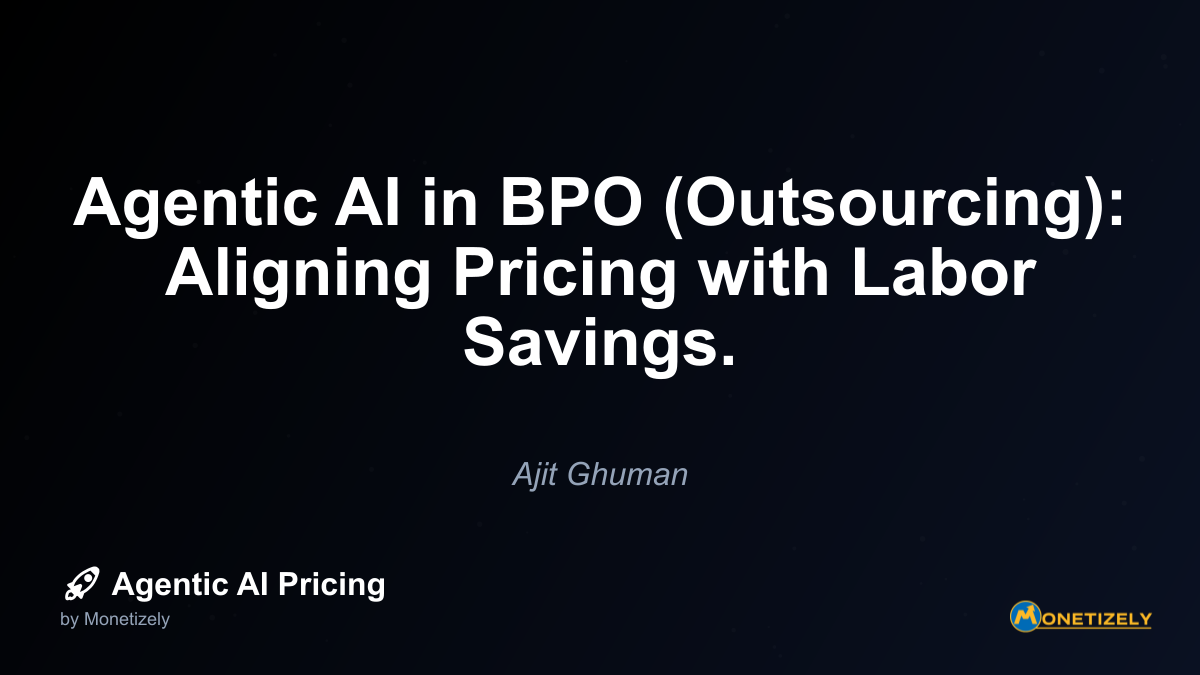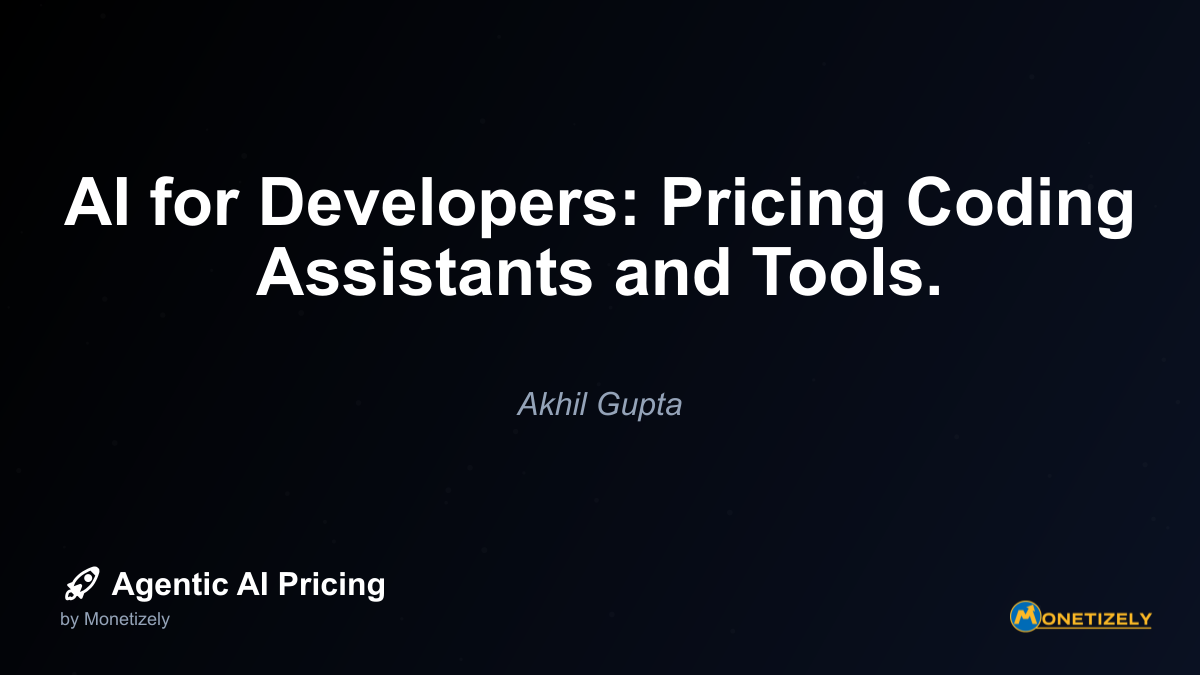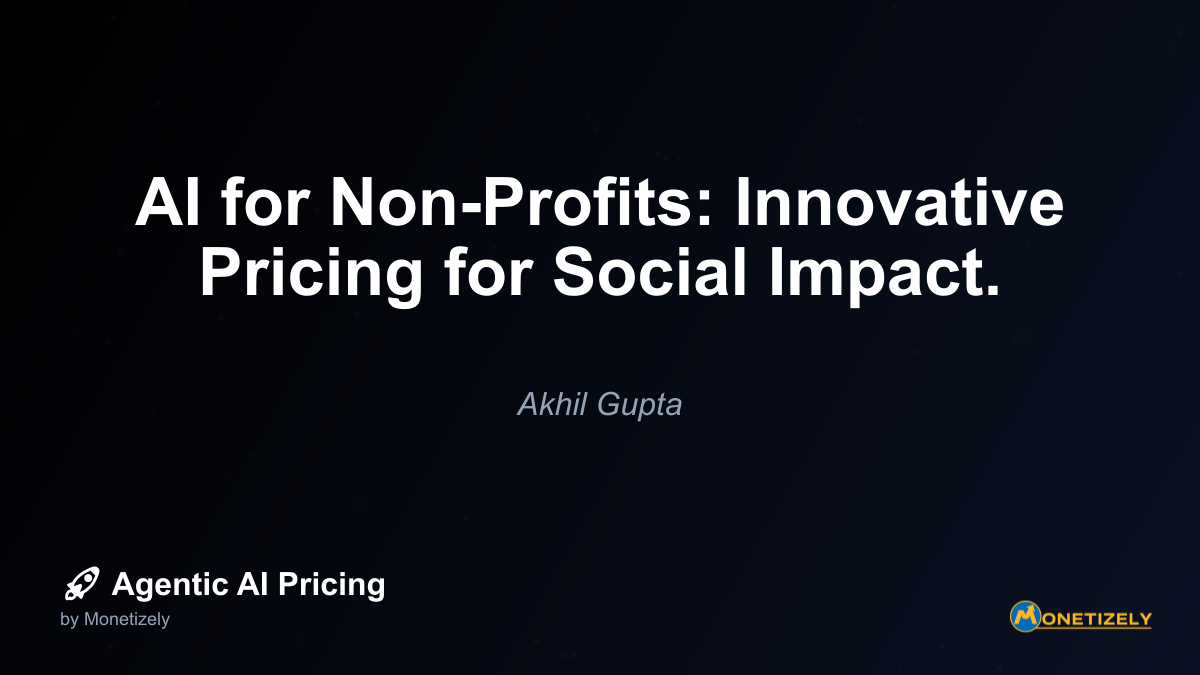· Ajit Ghuman · Industry Insights · 11 min read
AI Adoption Trends 2025: Which Industries Lead and Lag.
AI and SaaS Pricing Masterclass
Learn the art of strategic pricing directly from industry experts. Our comprehensive course provides frameworks and methodologies for optimizing your pricing strategy in the evolving AI landscape. Earn a professional certification that can be imported directly to your LinkedIn profile.

AI adoption across industries is accelerating at varying rates, creating a complex landscape for vendors, pricing strategists, and business leaders. Understanding which sectors are embracing agentic AI technologies—and which remain hesitant—provides crucial context for companies developing AI solutions and planning market entry strategies.
The State of AI Adoption in 2025: An Overview
As we move through 2025, the AI adoption landscape has become increasingly stratified. Organizations no longer simply fall into “adopters” and “non-adopters” categories. Instead, we’re seeing a nuanced spectrum of implementation maturity across industries, with some sectors racing ahead with sophisticated agentic AI deployments while others cautiously experiment or remain on the sidelines.
Recent data from the Global AI Readiness Index shows that overall enterprise AI adoption has reached 78% in some form, up from 50% in 2022. However, when examining specifically agentic AI systems—those capable of autonomous decision-making and action-taking on behalf of users—the adoption rates vary dramatically by industry.
This variation creates both opportunities and challenges for AI solution providers. Understanding which industries are receptive to advanced AI capabilities, which are approaching cautiously, and which face significant barriers helps inform everything from product development to pricing strategy.
Leading Industries in Agentic AI Adoption
Technology and Software
Unsurprisingly, the technology sector continues to lead in agentic AI adoption, with implementation rates approaching 85% among enterprise-level companies. Several factors drive this leadership position:
Technical expertise: Technology companies possess the internal talent to evaluate, implement, and customize AI solutions.
Cultural alignment: The sector’s “move fast” ethos embraces experimentation with cutting-edge technologies.
Competitive pressure: With tech giants like Microsoft, Google, and Amazon investing billions in AI capabilities, competitive pressure drives adoption throughout the ecosystem.
Clear ROI models: The sector has established frameworks for measuring AI return on investment, making budget approval processes smoother.
In the technology sector, agentic AI has moved beyond experimental stages to become embedded in core processes. Software development teams deploy coding agents that autonomously generate, test, and optimize code. IT operations leverage AIOps agents that monitor systems, predict failures, and self-heal infrastructure issues.
From a pricing perspective, technology companies have shown willingness to invest substantially in agentic AI, with average annual spending per enterprise reaching $3.2 million in 2025. The sector has embraced value-based pricing models, where AI vendors can command premium prices by demonstrating tangible efficiency gains or competitive advantages.
Financial Services
The financial services industry has emerged as a surprisingly aggressive adopter of agentic AI, with banks, insurance companies, and investment firms implementing autonomous systems at accelerating rates. Current adoption stands at approximately 72% for enterprise financial institutions.
Key adoption drivers include:
Data abundance: Financial institutions possess vast structured datasets ideal for AI training.
Process optimization opportunities: Many financial processes involve repetitive tasks ripe for automation.
Quantifiable outcomes: The industry can precisely measure improvements in fraud detection rates, trading performance, or customer acquisition costs.
Competitive differentiation: Financial institutions increasingly view AI capabilities as competitive differentiators in customer experience.
Within financial services, we see agentic AI deployed across numerous functions. Investment firms utilize autonomous trading agents that analyze market conditions and execute trades without human intervention. Insurance companies deploy claims processing agents that can evaluate, price, and settle routine claims with minimal human oversight.
The sector’s pricing tolerance for AI solutions is among the highest across industries, with firms willing to pay premium prices for systems that demonstrate measurable performance improvements. Usage-based and performance-linked pricing models have gained particular traction, with financial institutions accepting arrangements where vendors share in the upside of successful AI implementations.
Healthcare
The healthcare industry has accelerated its AI adoption dramatically since 2023, with current implementation rates around 65% among large healthcare systems. This represents a significant shift from historical caution toward a more enthusiastic embrace of AI capabilities.
Several factors drive healthcare’s emerging leadership position:
Clinical labor shortages: Persistent staffing challenges create urgency around automation and augmentation technologies.
Administrative burden: The sector’s massive administrative overhead presents clear opportunities for AI-driven efficiency.
Research acceleration: AI’s ability to analyze complex medical data and identify patterns offers tremendous value for research institutions.
Regulatory evolution: Regulatory frameworks have matured to provide clearer guidance on AI implementation in clinical settings.
In healthcare, agentic AI applications span both clinical and operational domains. Diagnostic agents assist radiologists by autonomously flagging potential abnormalities in imaging studies. Administrative agents manage insurance verification, billing processes, and appointment scheduling with minimal human intervention.
The sector’s pricing models have evolved to accommodate healthcare’s unique characteristics. Outcome-based pricing has gained traction, particularly for clinical applications where vendors can tie compensation to measurable improvements in diagnostic accuracy, reduced readmission rates, or other clinical metrics. For administrative applications, ROI-based pricing predominates, with vendors charging based on documented cost reductions or efficiency gains.
Manufacturing
The manufacturing sector has emerged as a surprisingly strong adopter of agentic AI, with implementation rates reaching approximately 68% among large manufacturers. This represents a significant acceleration from historical adoption patterns.
Key factors driving manufacturing’s AI embrace include:
Industry 4.0 initiatives: Broader digital transformation efforts create natural integration points for AI capabilities.
Supply chain optimization needs: Recent supply chain disruptions highlighted the value of predictive and adaptive AI systems.
Quality control imperatives: AI’s pattern recognition capabilities offer substantial value for defect detection and quality assurance.
Labor challenges: Persistent workforce shortages and rising labor costs increase automation’s appeal.
In manufacturing environments, agentic AI manifests in numerous applications. Predictive maintenance agents monitor equipment performance, forecast potential failures, and autonomously schedule preventive interventions. Supply chain optimization agents continuously adjust procurement and production schedules based on real-time market conditions and demand signals.
From a pricing perspective, manufacturing companies show strong receptivity to ROI-based models where AI vendors can clearly demonstrate cost savings or productivity improvements. The sector particularly values guaranteed performance agreements, where vendors commit to specific operational improvements and tie compensation to achievement of these targets.
Lagging Industries in Agentic AI Adoption
Education
Despite significant potential benefits, the education sector continues to lag in agentic AI adoption, with implementation rates hovering around 35% among higher education institutions and even lower in K-12 systems.
Several factors contribute to education’s cautious approach:
Budgetary constraints: Many educational institutions face tight budgets with limited flexibility for technology investments.
Privacy concerns: Student data protection requirements create additional compliance hurdles.
Change management challenges: Educational institutions often face cultural resistance to technological change.
Measurement difficulties: Quantifying AI’s impact on educational outcomes presents methodological challenges.
Where educational institutions do implement agentic AI, applications tend to focus on administrative functions rather than core teaching activities. Enrollment management agents help optimize recruitment and admissions processes. Student support agents provide 24/7 assistance with common questions and concerns.
The sector’s pricing sensitivity creates challenges for AI vendors. Educational institutions typically require lower price points than commercial enterprises, often seeking subscription models with predictable costs rather than usage-based or outcome-based arrangements. This pricing pressure has prompted some AI vendors to develop specialized “education editions” with reduced functionality at lower price points.
Construction
The construction industry remains among the slowest to adopt agentic AI, with implementation rates around 28% among large construction firms and significantly lower among small and mid-sized companies.
Key barriers to adoption include:
Project uniqueness: Each construction project involves unique characteristics that complicate AI implementation.
Data fragmentation: The industry lacks standardized data formats and centralized repositories needed for effective AI training.
Thin profit margins: Construction’s historically tight margins leave limited budget for technology investments.
Technical skills gap: The sector faces shortages of personnel with the technical expertise to implement and manage AI systems.
Where construction companies do implement AI, applications tend to focus on specific high-value use cases. Project planning agents help optimize scheduling and resource allocation. Safety monitoring systems use computer vision to identify potential hazards on construction sites.
From a pricing perspective, construction companies show extreme sensitivity to upfront costs. Successful AI vendors in this space have developed creative financing approaches, including deferred payment models where customers pay only after realizing documented cost savings or efficiency gains.
Public Sector and Government
Government agencies and public sector organizations continue to adopt agentic AI at rates significantly below private industry, with implementation around 32% among federal agencies and lower at state and local levels.
Several factors contribute to the public sector’s cautious approach:
Procurement complexity: Government purchasing processes involve lengthy approval cycles and complex compliance requirements.
Transparency mandates: Public sector organizations face strict requirements around explainability and algorithmic transparency.
Legacy system integration: Many government agencies operate aging technical infrastructure that complicates AI implementation.
Risk aversion: Public agencies face intense scrutiny around technology failures, creating cautious decision-making cultures.
Where government organizations do implement agentic AI, applications tend to focus on citizen service and administrative functions. Citizen service agents handle routine inquiries and application processing. Document processing agents extract and organize information from forms and submissions.
The public sector’s pricing models typically favor fixed-cost arrangements with clearly defined deliverables rather than more innovative approaches like outcome-based pricing. Government contracts often require detailed cost breakdowns and justifications, limiting vendors’ pricing flexibility.
Retail (Small and Medium Businesses)
While large retail enterprises have embraced AI aggressively, the small and medium retail segment shows significantly lower adoption rates, with implementation around 30% among mid-sized retailers and lower among small businesses.
Key adoption barriers include:
Cost sensitivity: Smaller retailers operate with limited technology budgets and high sensitivity to upfront costs.
Technical capabilities: Many small retailers lack dedicated IT staff to implement and manage AI systems.
Data limitations: Smaller operations generate less customer data, potentially limiting AI effectiveness.
Integration challenges: Many small retailers use point solutions that don’t easily integrate with advanced AI capabilities.
Where smaller retailers do implement AI, applications tend to focus on immediate revenue impact. Inventory optimization agents help predict demand and manage stock levels. Customer personalization engines tailor marketing messages based on purchase history and browsing behavior.
From a pricing perspective, smaller retailers show strong preference for subscription-based models with predictable monthly costs rather than usage-based or outcome-based approaches. This segment particularly values free trial periods and gradual implementation paths that allow for testing before full commitment.
Bridging the Adoption Gap: Implications for AI Vendors
The significant variation in AI adoption across industries creates both challenges and opportunities for AI solution providers. Several strategies can help vendors navigate this complex landscape:
Industry-Specific Solutions
Generic AI platforms increasingly struggle to gain traction in lagging industries. Successful vendors develop deeply verticalized solutions that address specific industry pain points and speak the language of target customers. For example, rather than offering a general document processing agent, developing a specialized “construction permit automation agent” that addresses specific regulatory requirements creates more compelling value for construction firms.
Flexible Pricing Models
One-size-fits-all pricing approaches fail in a fragmented adoption landscape. Leading vendors develop industry-specific pricing models that align with each sector’s unique characteristics:
- For leading industries with clear ROI models, outcome-based and value-sharing approaches work well
- For lagging industries with budget constraints, subscription models with lower entry points and gradual scaling paths prove more effective
- For highly regulated industries, fixed-price arrangements with clearly defined deliverables reduce perceived risk
Implementation Support
Technical expertise gaps represent a major adoption barrier in lagging industries. Successful vendors bundle comprehensive implementation services with their AI products, effectively lending technical capabilities to organizations that lack internal resources. This “white glove” approach, while increasing delivery costs, substantially expands the addressable market by making AI accessible to less technically sophisticated organizations.
ROI Quantification Frameworks
Uncertainty about economic returns remains a significant adoption barrier across lagging industries. Vendors that develop robust ROI quantification frameworks—complete with industry-specific benchmarks and calculation methodologies—help potential customers build compelling business cases for AI investment.
The Future of AI Adoption: Convergence or Continued Divergence?
A key question for AI vendors and strategists is whether the current adoption gaps will persist or gradually close over time. Evidence suggests a mixed picture:
Forces Driving Convergence
Several factors may accelerate adoption in currently lagging industries:
Competitive pressure: As AI adoption reaches critical mass within an industry, competitive pressures often force holdouts to implement similar capabilities.
Declining implementation costs: The emergence of more accessible AI platforms with simpler integration paths reduces technical barriers.
Proof point accumulation: As successful case studies emerge within an industry, they reduce perceived risk for subsequent adopters.
Generational leadership shifts: Younger executives typically show greater comfort with advanced technologies, potentially accelerating adoption as leadership demographics evolve.
Forces Maintaining Divergence
Countervailing forces suggest some adoption gaps may persist:
Structural constraints: Industries with thin margins or heavy regulation face fundamental constraints that technology evolution alone cannot overcome.
Data advantages compound: AI-leading industries generate more data through their implementations, potentially widening their advantage over time.
Talent concentration: AI expertise tends to concentrate in leading industries that offer higher compensation and more advanced work, creating a self-reinforcing cycle.
Investment capacity differences: Industries with stronger financial profiles can invest more aggressively in emerging technologies, potentially maintaining their lead.
Conclusion: Strategic Implications for 2025 and Beyond
As the agentic AI landscape continues to evolve through 2025, several strategic implications emerge for various stakeholders:
For AI solution providers, the fragmented adoption landscape demands increasingly sophisticated go-to-market strategies. The era of generic AI platforms with uniform pricing models is giving way to verticalized solutions with industry-specific packaging, pricing, and implementation approaches.
For enterprises in AI-leading industries, the focus shifts from initial adoption to optimization and competitive differentiation. Organizations in these sectors must move beyond basic implementation to develop sophisticated AI governance models and integration strategies that maximize value from increasingly autonomous systems.
For organizations in lagging industries, the priority becomes identifying specific high-value use cases where AI can deliver compelling ROI despite industry constraints. Rather than attempting comprehensive transformation, targeted implementation of agentic AI for specific business problems offers the most promising path forward.
The agentic AI revolution continues to unfold at different rates across the economic landscape. Understanding these adoption patterns—and the forces driving them—provides essential context for anyone developing, implementing, or investing in these transformative technologies.
Co-Founder & CEO
Ajit is the author of Price To Scale, a top book on SaaS Pricing and is the Founder of Monetizely. Ajit has led and worked in pricing and product marketing at firms like Twilio, Narvar and Medallia. His work has been featured in Forbes and VentureBeat. Ajit regularly consults with software companies from Seed stage to post-IPO on pricing strategy. Ajit is also a highly-rated co-instructor for 'The Art of SaaS Pricing and Monetization' on Maven.
Pricing Strategy Audit
Let our experts analyze your current pricing strategy and identify opportunities for improvement. Our data-driven assessment will help you unlock untapped revenue potential and optimize your AI pricing approach.




